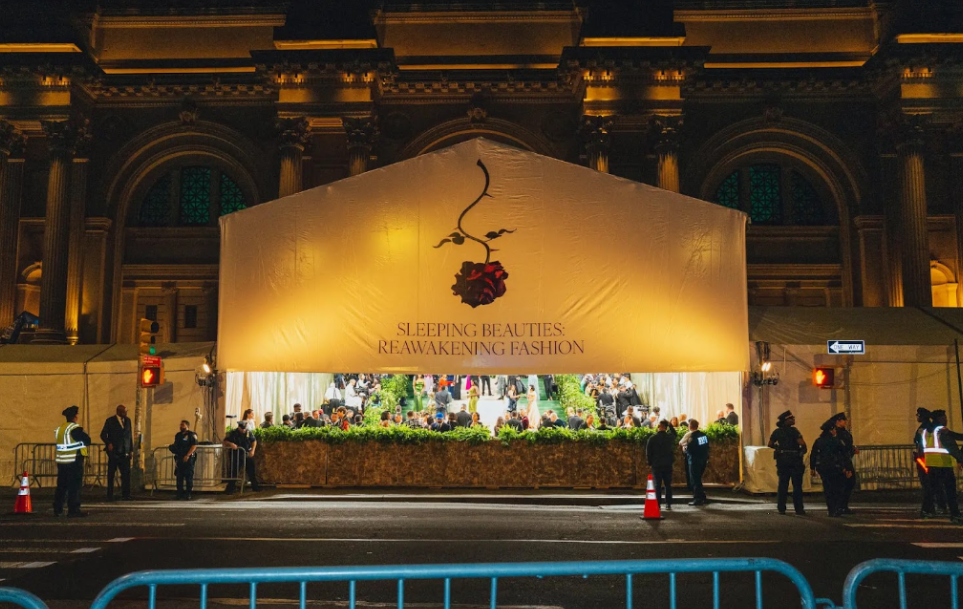
Outside the Met Gala. The New York Times
On May 6, the fashion magazine Vogue hosted its annual Met Gala. The Met Gala, typically hosted on the first Monday of May, is a charity event for The Metropolitan Museum of Art’s Costume Institute and marks the opening of its annual fashion exhibition.
This year, the theme of the exhibition, which opened on May 10th, is Sleeping Beauties: Reawakening Fashion. The exhibition features two hundred twenty garments and accessories that span over four centuries, all connecting to a central theme of nature. These garments are too fragile to be worn ever again, which is why they are referred to as sleeping beauties, but they are given a new life through the exhibit
using artificial intelligence, computer-generated imagery, video animation, light projections, and soundscapes, giving them a new vibrance.
This year, the dress code for the Met Gala was “The Garden of Time”, referencing a short story by J.G. Ballard with the same name. In The Garden of Time, a man named Count Axel and his wife live in an isolated villa as a mob is steadily approaching, poised to attack. Inside Axel’s villa, there is a garden of crystal-like flowers that can rewind time. Throughout the story, their garden deteriorates and the flowers cannot rewind time fast enough. When the mob finally reaches his villa, Axel and his wife transform into statues.
Both the theme and the dress code at the Met Gala reflected ideas of transience, which is especially relevant with the rise of fast fashion and the overconsumption of clothing. Many celebrities channeled this through the idea of decay. Singer Camilla Cabello arrived at the Gala with a clutch made of ice that melted throughout the night. Portraying the idea of delicacy, actress Elle Fanning wore a custom resin dress that looked like glass. Model Wisdom Kaye was dressed in a red outfit that appeared aged and worn, spotted with burn holes, mimicking a wilting rose. Incorporating aspects of nature was extremely common throughout the night, with many dressed in floral attire. Others elected to wear outfits reflecting the idea of time. Singer/songwriter Tyla arrived at the Gala with an outfit made of sand, carrying an hourglass, referencing “the sands of time.”
Outside of the Gala, twenty-seven protestors were arrested during a march in support of Palestine. Many online users pointed out the dress code’s irony, saying that those attending the gala paralleled Count Axel and his wife trying to ignore the mob descending upon them. While the protests did not interrupt the Met Gala, they shed light on the inequalities exemplified by the event. Tickets for the Gala are typically purchased by brands that invite celebrities to wear their clothes. A single ticket to attend this year cost 75,000 dollars, over 15,000 dollars greater than the current average American salary. According to a 2016 study from the US Air Force, it costs, on average, 232.24 dollars (when adjusted for inflation) to transport one ton of food aid by truck. On average, one ticket to the Met Gala could have transported more than three hundred tons of food aid to Palestinians by truck. While many enjoyed the extravagant luxury of the event, perhaps it should also be a symbol to confront socioeconomic disparities and human rights violations happening around the world.
